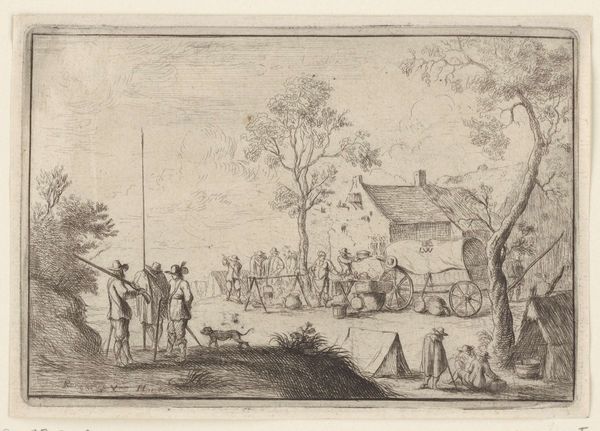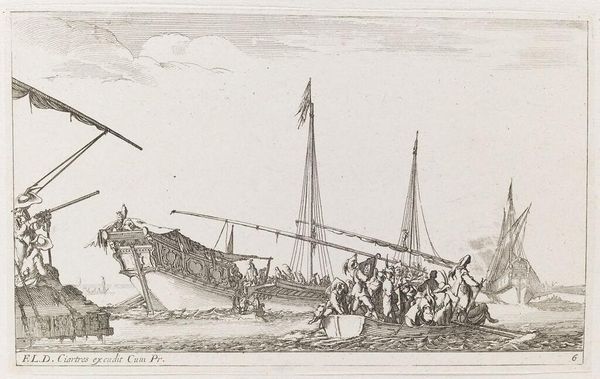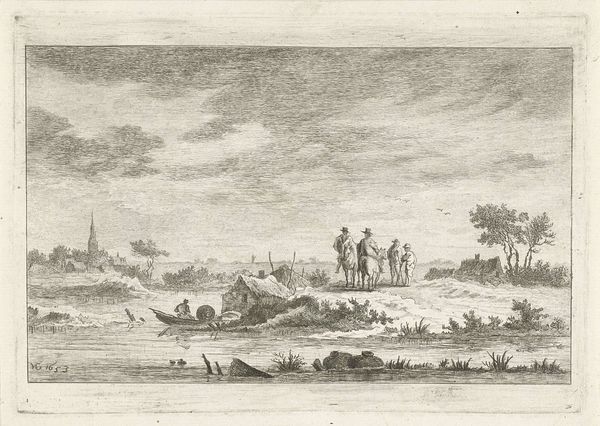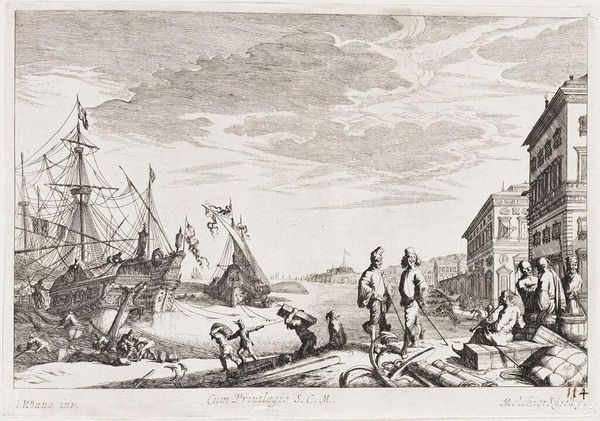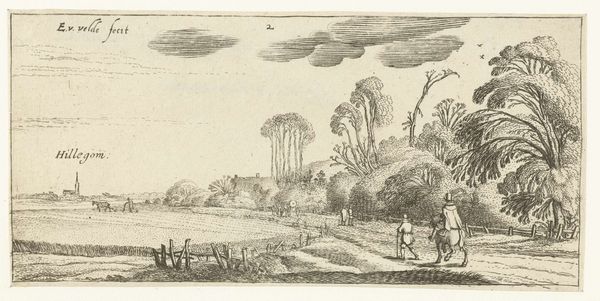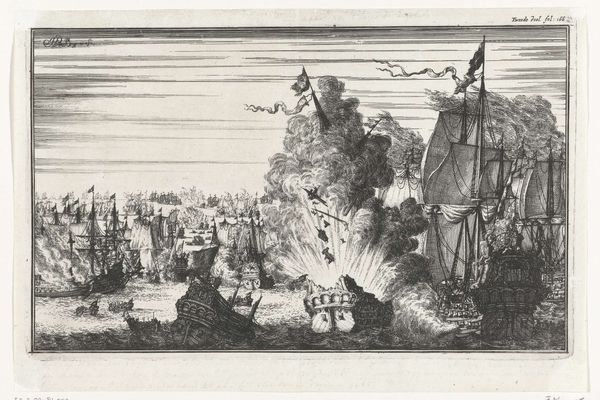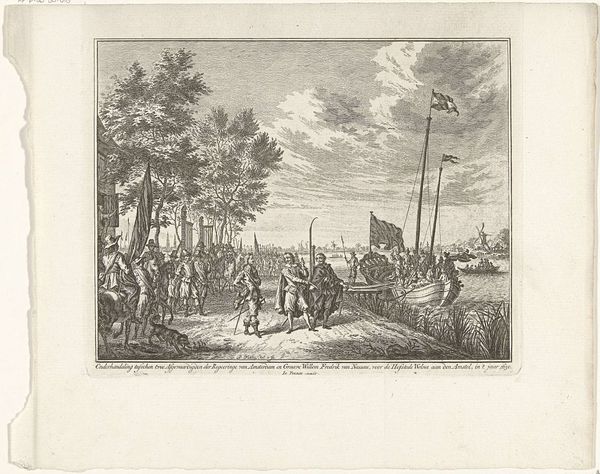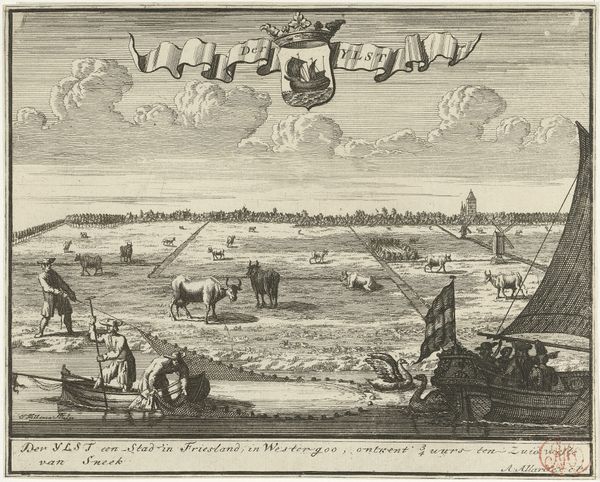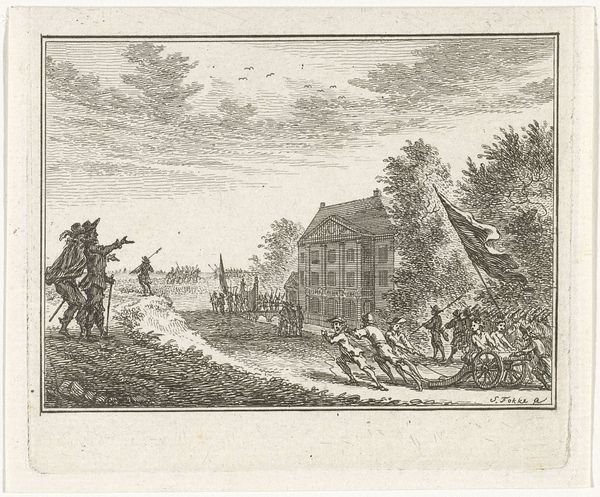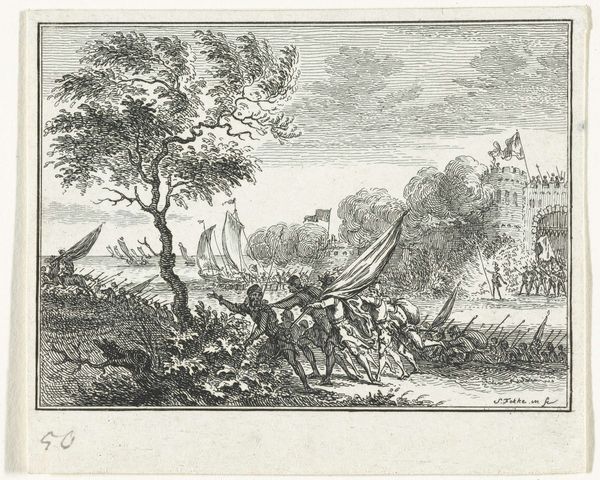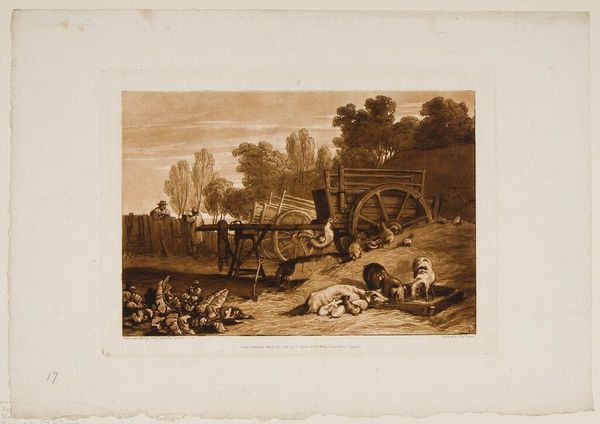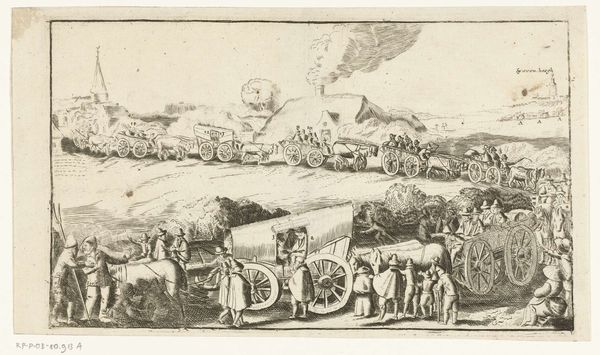
print, engraving
#
dutch-golden-age
# print
#
old engraving style
#
pencil drawing
#
cityscape
#
history-painting
#
engraving
Dimensions: height 167 mm, width 282 mm
Copyright: Rijks Museum: Open Domain
Curator: Looking at this print, it's impossible not to feel overwhelmed by the sheer visual chaos. So many ships, so much smoke… it’s almost suffocating. Editor: You’ve pinpointed something crucial. What you're seeing is a representation of the "Vierdaagse Zeeslag, 1666," or the Four Days' Battle. This print, made by Thomas Doesburgh sometime between 1690 and 1692, captures a pivotal naval engagement between the English and Dutch fleets. Curator: Ah, that contextualizes the density of the imagery. This piece really feels like an attempt to capture the immensity of the conflict itself, its significance seemingly coded within its overcrowded composition. Notice how the plumes of smoke are as prominent, if not more so, than the individual ships themselves? It’s almost as if the smoke is swallowing everything. Editor: Exactly. These visual elements were deployed to shape the narrative around the event. Doesburgh uses the detailed style of Dutch Golden Age engravings to construct this scene for a contemporary audience. What do you make of the detail provided in the foreground compared to the ships further in the distance? Curator: In the foreground there's wreckage. It gives a clear sense of the battle's toll. I'm drawn to that sinking vessel on the right—a visceral symbol of defeat, its mast reduced to splintered crosses. And look how much of the foreground is taken up by waves! There are ships that look barely afloat and they fill almost half the visual space. Editor: A key to understanding this print lies in remembering the sociopolitical context of the time. The Dutch Republic depended on naval power and maritime trade, therefore victories, real and perceived, like this were sources of immense national pride. Curator: Absolutely. It strikes me that the symbolic language of conflict—the wreckage, the engulfing smoke, and the flags of the ships struggling to fly– is incredibly enduring. You see similar imagery recycled again and again in depictions of naval combat. Doesburgh seems to have tapped into an almost universal visual vocabulary for this type of historical moment. Editor: I agree entirely. It's fascinating how Doesburgh blends historical record and propaganda. He's creating an image of the Four Days' Battle that, while rooted in a specific event, also participates in the larger, ongoing narratives of national identity and maritime prowess. Curator: This makes one ponder the complex relationship between symbols and truth. Editor: A very salient point.
Comments
No comments
Be the first to comment and join the conversation on the ultimate creative platform.
